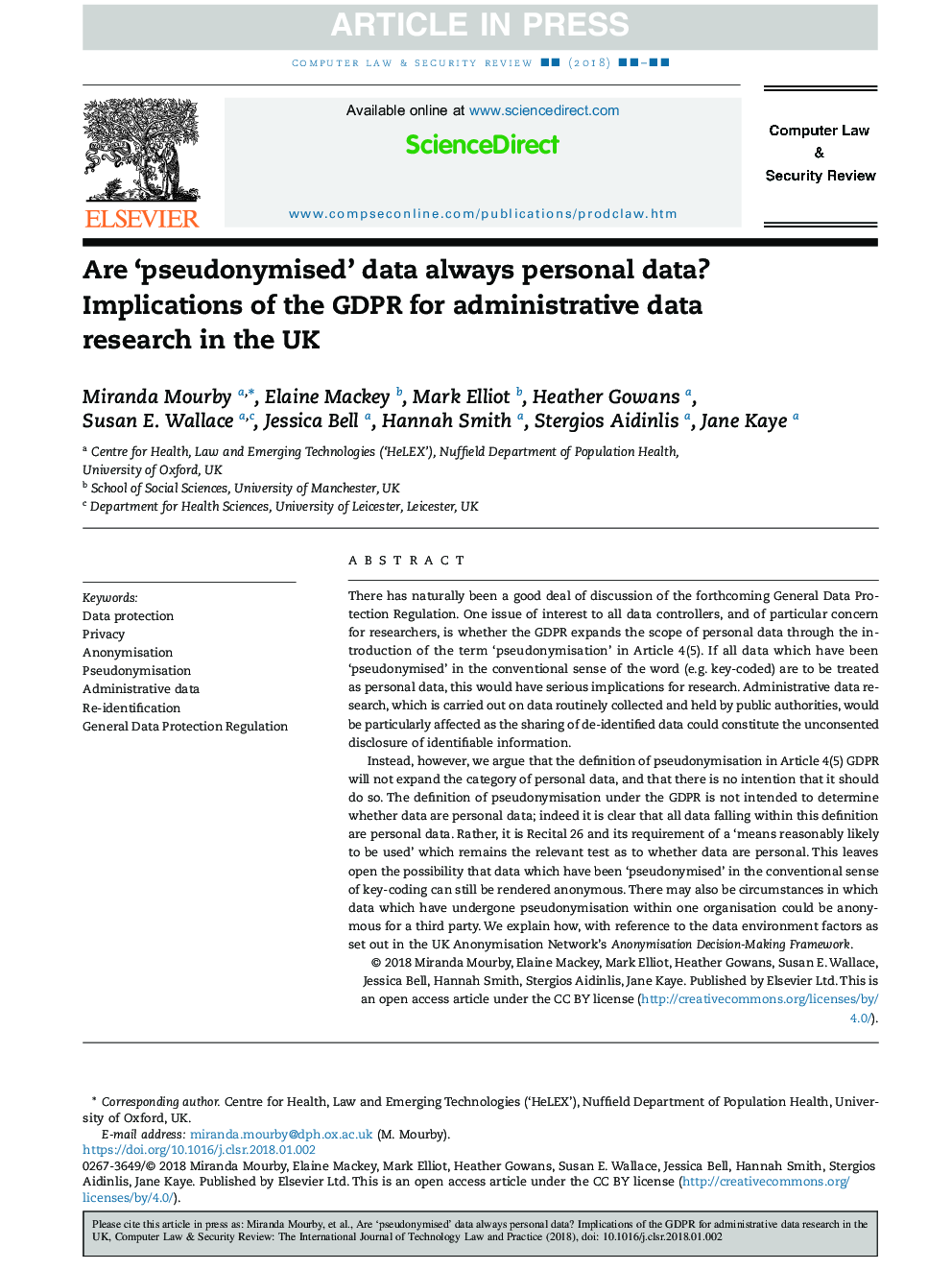| Article ID | Journal | Published Year | Pages | File Type |
|---|---|---|---|---|
| 6890512 | Computer Law & Security Review | 2018 | 12 Pages |
Abstract
Instead, however, we argue that the definition of pseudonymisation in Article 4(5) GDPR will not expand the category of personal data, and that there is no intention that it should do so. The definition of pseudonymisation under the GDPR is not intended to determine whether data are personal data; indeed it is clear that all data falling within this definition are personal data. Rather, it is Recital 26 and its requirement of a 'means reasonably likely to be used' which remains the relevant test as to whether data are personal. This leaves open the possibility that data which have been 'pseudonymised' in the conventional sense of key-coding can still be rendered anonymous. There may also be circumstances in which data which have undergone pseudonymisation within one organisation could be anonymous for a third party. We explain how, with reference to the data environment factors as set out in the UK Anonymisation Network's Anonymisation Decision-Making Framework.
Keywords
Related Topics
Physical Sciences and Engineering
Computer Science
Computer Science (General)
Authors
Miranda Mourby, Elaine Mackey, Mark Elliot, Heather Gowans, Susan E. Wallace, Jessica Bell, Hannah Smith, Stergios Aidinlis, Jane Kaye,
